Designing a three- to four-season boot is asking a lot of footwear manufacturers.
Can you really buy one pair of boots that will see you right through spring, summer and autumn then deal with winter conditions?
It’s arguable it’s an impossible task: a boot that will happily cope with mountainous terrain – usually much rockier than lower walking area , possibly take a walking crampon for true winter conditions, and be flexible enough for all-year use on easier route, is asking a lot.
But some of these boots certainly tick most of the boxes, if you’re prepared to put up with the higher weight and largely stiffer soles of the three- to four-season boot.
This test has a huge range of footwear, from the boots that feel like slippers when you put your foot in them, but which won’t cope too well with scree and scrambly mountain routes, to ones that will happily keep you going on the toughest terrain, even on Scottish winter routes.
Which you choose will depend on your personal preferences and also whether you want these to be your only pair of walking boots.
It’s also very important your boots fit your feet. So we would always recommend you try them on, preferably at an outdoors shop that has trained salespeople who will take the time to make sure you walk out with a pair that fit properly.
Some models come in versions specifically made for women. Where this is the case, we have noted the sizes available in women’s fittings.
Happy walking!
Aku Transalpina GTX boots
Price: £185
Colour: grey/green
Weight: 1,484g/pair
Construction: suede/Air 8000 fabric
Waterproofing: Gore-Tex Performance Comfort membrane
Country of manufacture: Romania
Crampon rating: B0 (not crampon compatible)
Sole stiffness: 5
Sizes: 3-13
The Transalpina uses a combination of 1.8mm suede and Aku’s Air 8000 fabric in its uppers. The fabric is a tough-feeling mesh that the company says offers up to 11 more breathability than conventional fabric.
The boots certainly had good breathability and were comfortable straight out of the box, with the ankle cuff and tongue well padded. There are three pairs of metal lace loops with a pair of metal locking hooks and two further pairs of hooks. This enables the forefoot to be tightened independently of the ankle section. The locking hooks are well positioned to hold the foot in place and prevent heel lift.
The Transalpina has Aku’s Exoskeleton system, an external polyurethane cradle applied to the mid and rear of the lower section of the boot to help stability, and it worked well, holding the foot in place comfortably.
Much of the comfort of the boot comes from the combination of a dual density outsole – the bit that actually hits the ground – produced for Aku by Vibram, and the moulded EVA midsole along with the company’s Internal Midsole System on top of that.
The forefoot area is quite wide and there was no pinching. The ankle is mid-height.
Shock absorption was very good, and the boots coped with prolonged walking on hard surfaces very well.
The Gore-Tex membrane kept the rain out and the stiff toe box protects from knocks.
Traction uphill on grass, gravel, rock and mud was good, and braking on these surfaces was good too.
In the wet, performance dropped a little on rock, but was still acceptable.
The Transalpina boots are great on long distances; their comfort and shock absorption, combined with good breathability, mean feet cope well with prolonged walking in these Aku boots.
As a three-to-four season boot, the Transalpina comes in towards the bottom end of the range in terms of stiffness and mountain suitability. True winter conditions are beyond this model, but they are happy in the fell environment and on the mountain in typical spring and autumn conditions.
For a fabric boot, the Aku model was towards the heavier end, but this didn’t present any great problems even on longer trips as the comfort level meant the Transalpina really is one of those pieces of kit you can put on and forget.
Performance 20/30
Comfort 22/30
Versatility 5/10
Quality 8/10
Value for money 14/20
Total score: 69/100
Alt-Berg Mallerstang
Price: £209.99
Colour: brown
Weight: 1,876g/pair
Construction: 2.8mm-3.0mm full-grain leather
Waterproofing: Sympatex grade 4
Country of manufacture: UK
Crampon rating: B1 (flexible crampons)
Sole stiffness: 8
Sizes: 1-14 (incl half sizes); widths XN, N, M, W, XW.
Alt-Berg boots are made in the Yorkshire town of Richmond, and the Mallerstang is as traditional as it’s possible to be.
The Mallerstang is Alt-Berg’s most robust leather boot, aimed at coping with mountain terrain. Its stiff sole consists of a Vibram Ice Trek outsole with deep lugs.
The boot has a tough toe box that will cope with knocks against rocks, and the heel is also toughened to protect the foot. There is a heel block on the exterior that will take a walking crampon clamp. The sole flexes a little so will only take a flexible crampon, but that should present no problem for someone heading to walk the Scottish hills in winter, as long as you’re not planning a technical climb.
The heel is quite narrow, and holds the foot in place at the back of the boot without pinching. It’s quite easy to get heel lift when walking uphill in boots with a sole as stiff as the Mallerstang, but the good heel construction, allied with the fairly low volume over the instep and a locking metal lace ring at the flex point, with the force directed at the heel, meant there was no heel lift when properly laced.
The lacing is unusual in that there are two bottom pairs of conventional d-rings which allow easy pull-through over the toe area; then come three more pairs of constricted metal loops which hold the laces, before reaching the locking loop. This has the lace ‘captive’ rather than the more common locking hook. Tightening the lace through it locks it in place; pulling the lace backwards releases it. These are topped off with two pairs of open metal lace hooks.
Alt-Berg supplied a tin of its own Leder-Gris wax-oil treatment it recommends to keep the boots waterproof. In particular, it says it should be brushed regularly into all sewn seams, helping the stitching become more resilient to abrasion. The bootmaker also recommends using gaiters over the lacing area of the boot in wet conditions to keep water out.
We didn’t; and our feet still stayed dry. The thick, quality leather did a good job of keeping the rain out.
The Mallerstang didn’t have as much shock absorption underfoot as some models in the test. It has a polyurethane midsole, which cushions a little of the pounding, and a foam footbed, but walking in the Alt-Berg boots was still reasonably comfortable.
The boots worked well on grip. Traction on mud, with the deep cleats, was very good, and performance on rock was assured. The Mallerstangs performed well on grass and gravel too. Braking was good too, with plenty of confidence on different terrain.
The Mallerstangs can be ordered in five different widths as well as overall half-sizes. The company also offers a resoling service at its factory.
We would be happy taking the Mallerstangs into virtually any conditions in the UK, short of full-on technical winter routes. The boot is very well made, oozes toughness and easily copes with mountain terrain.
On longer trails, the lack of underfoot cushioning might detract.
Overall, a fine piece of British quality bootmaking.
Performance 26/30
Comfort 17/30
Versatility 8/10
Quality 9/10
Value for money 16/20
Total score: 76/100
Anatom Q3 Trekking
Price: £145
Colour: brown
Weight: 1,676/pair
Construction: 2.8mm full-grain leather
Waterproofing: Tri.aria
Country of manufacture: Romania
Crampon rating: B0 (not crampon compatible)
Sole stiffness: 5
Sizes 42-47 (men’s); 36-42 (women’s)
The Anatom boots are traditional looking brown leather boots with a mid-height ankle.
The sole is fairly flexible so won’t take a crampon.
The Q3 Trekking boots were instantly comfortable, with good underfoot cushioning from the midsole and the grippy Vibram Ushba outsole.
The forefoot area is quite wide and roomy and the toebox is hard, to withstand knocks from rock.
The heel narrows and holds the foot well. Lacing is conventional speed lacing with aluminium loops at the bottom and locking hooks on the fifth position upwards, which are well directed to keep stop heel lift. The top two positions have metal open hooks.
The ankle cuff and tongue are padded and lined with white leather. Waterproofing is via Anatom’s own Tri.aria membrane combined with the good quality 2.8mm full-grain leather. Breathability from the membrane was good, but not the best in the test.
Anatom also provides us with a sachet of Nikwax to renew the water repellency of the leather.
Grip on rock was good, and the Q3’s also had good traction on grass, mud and gravel. Braking was similar.
The Anatom Q3 Trekkings are good value for a pair of leather boots. Comfortable and good for longer routes, they will also cope with most mountain terrain, though as winter conditions threaten they would struggle, with their more flexible sole.
Performance 21/30
Comfort 21/30
Versatility 6/10
Quality 7/10
Value for money 15/20
Total score: 70/100
Asolo Sherpa GV
Price: £250
Colour: black/silver
Weight: 2,052g/pair
Construction: water-resistant Perwanger leather 2.2 to 2.4 mm
Waterproofing: Gore-Tex Performance Comfort membrane
Country of manufacture: Romania
Crampon rating: B2 (compatible with semi-automatic crampons)
Sole stiffness: 9
Sizes: 6-13½
The Sherpa GVs are a full-on mountain boot with a stiff sole and high ankle. Styling is quite Alpine, with their black Perwanger leather and silver leather detailing on the ankle and tongue.
Their construction makes them suitable for anything the British mountains can throw at them in spring, summer and winter, and they will also take a semi-automatic crampon for winter, thanks to the heel lip and Newmatic crampon fixing holes.
They feel heavy on the foot, but they would, considering their construction. There was a slight hint of heel lift, but nothing troublesome.
The lacing has one pair of metal d-rings, then three pairs of metal loops, with a pair of locking metal hooks which allow the forefoot section to be tightened separately from the ankle section. There is then a pair of fabric loops and two final metal hook pairs. The tongue is adjustable by Velcro.
A hard rubber toe box gives excellent protection at the front of the boot and a tough rand continues all the way round. Kicking footholds in snow should prove no problem to the Sherpa GVs.
Shock absorption to the sole of the foot is quite good for such a stiff boot. The midsole is dual density PU. The heel has a separate dual-system midsole. As well as mountain routes, we put the boots to use tootling round moorland paths and the cushioning underfoot was quite acceptable. The uppers are very protective of the foot, thanks to the 2.4mm one-piece water-resistant leather.
The Gore-Tex membrane keeps out any water that might seep through the leather on a long trip.
We managed to fit a pair of C2 crampons to the boots, which have a suitable block at the heel as well as the Newmatic indentations. They were not tested in full winter conditions, however.
These beefy boots are not ideal for huge, long routes because of their very stiff soles, but are ideal for Scottish mountain trips and Lake District wanderings and Snowdonia routes. Longish walk-ins to Scottish mountain routes should be a comfortable experience.
Protection from knocks was good from the tough toe box and rubber rand running all round the boot.
Traction uphill grip on grass, mud, loose ground and rock was good. Braking downhill on similar terrain was assured. As you would expect from such a boot, grip on rock was very confident. There was a slight tendency for the lugs to clog up when dealing with mud.
Asolo says the Sherpa GV is suited to vie ferrate, hard trekking and classic mountaineering. We would agree, with the boot capable of operating in all UK terrain, with the added advantage of taking a crampon and extending its use into proper winter conditions.
However, we wouldn’t want to tackle a long-distance trail in these boots which, because of their intended purpose, are the heaviest in the test at more than 2kg a pair.
Performance 28/30
Comfort 15/30
Versatility 8/10
Quality 8/10
Value for money 16/20
Total score: 75/100
Berghaus Explorer Ridge Plus
Price: £135
Colour: brown
Weight: 1,184g/pair
Construction: Pittards WR100X 1.6-1.8mm full grain leather
Waterproofing: Gore-Tex Performance Comfort membrane
Country of manufacture: China
Crampon rating: B0 (not crampon compatible)
Sole stiffness: 4
Sizes: 6-12 (men’s); 4-8 (women’s)
This is the latest, 2014, incarnation of Berghaus’s top-selling boot, updated using British leather from Pittards’ tannery and a simplified upper.
It’s the lightest boot in the test, despite its leather construction, and has one of the most flexible soles, so won’t take a crampon.
The toe-box is stiff enough to withstand knocks from rocks, and the heel box is also stiffened. The ankle cuff is mid-height and made from well-padded tough fabric, as is the tongue, which also has leather sections, including the lace keeper.
The outsole is Berghaus’s own Opti-Stud unit, one of the few in the test not to be manufactured by Vibram. This is topped by an EVA midsole and Ortholite footbed, with extra cushioning in the strike areas of the heel and forefoot.
The forefoot area is quite wide with a fairly high volume, but flexing at the forefoot didn’t prove a problem.
All of which makes for a very comfortable walk, straight out of the box. The lacing system has four pairs of metal loops which allow for easy pull-through, then there’s a metal locking hook, topped by two more pairs of metal hooks.
There was some initial pressure from the ankle cuff, but adjustment of the lacing eased this. The locking hook directs the force towards the heel area, meaning the foot can be held well without heel lift.
Traction uphill from the Berghaus outsole was very good on rock and grass, good on mud. Braking performance downhill was similarly impressive.
The Explorer Ridge Plus comes in half sizes, and available in men’s and women’s versions.
The boot is best described as a two-to-three-season model rather than one season up. It’s happy enough on the mountain but if full winter conditions are likely, it’s too flexible and bendy to cope.
However, its comfort and performance would make it a great boot for long-distance trails and multi-day trips. It’s also keenly priced.
Performance 23/30
Comfort 22/30
Versatility 5/10
Quality 7/10
Value for money 16/20
Total score: 73/100
Hanwag Nazcat GTX
Price: £180
Colour: brown
Weight: 1,672g/pair
Construction: waxed Nubuck/Cordura
Waterproofing: Gore-Tex
Country of manufacture: Europe
Crampon rating: B1 (flexible crampons)
Sole stiffness: 7
Sizes 6-13 (men’s); 3½-9 (women’s)
The Nazcat uses high-quality cowhide from the Heinen Tannery in Germany, combined with Cordura in parts of the tongue.
The boot has a tough high rand running all the way round it, incorporating a hard toe box and stiffened heel section.
There’s a very thick midsole which uses polyurethane, and gives very good underfoot cushioning. The boot, though quite stiff, has good comfort. Its uppers are quite soft for a mountain boot, but the rand gives good protection against rocks.
Lacing can be split to hold the forefoot and ankle separately. There is a pair of metal d-rings, then three pairs of metal loops before the locking hook, which holds the foot reasonably well, though it did need carefully adjustment to stop the slight initial heel lift within the boot.
Three pairs of metal hooks run up the ankle, which is high and well padded, with foam collar and tongue. There are also small ventilation holes in the padding which help heat disperse.
The main problem with an otherwise very comfortable boot was that its flex point pushes the upper into the foot around the area of the second lace loops. This eased a little with wear, but it did become marked on a long route. Slackening the lacing on the forefoot area helped a little.
The forefoot is very roomy and there is no sense of the toes being pinched.
The Vibram Fuora outsole worked well and both traction and braking on rock was good, with the boots also coping well with grass, gravel and mud.
Hanwag rates the Nazcat as a boot suitable for challenging routes in low mountain areas, and easier trekking routes. It’s a rating we agree with. The boot is tough enough for a bit of kicking in in snow, and there’s good torsional stability from the sole. It will also take a pair of strap-on crampons.
Hanwag also says the boot can be easily resoled due to its cemented construction. The women’s version has what the brand calls a ‘raised heel’.
Performance 22/30
Comfort 21/30
Versatility 8/10
Quality 8/10
Value for money 15/20
Total score: 74/100
Helly Hansen Odin Flow Hiker HT
Price: £150
Colour: green/black/blue
Weight: 1,276g/pair
Construction: abrasion-resistant mesh/synthetic rubber
Waterproofing: Helly Performance membrane
Country of manufacture: Vietnam
Crampon rating: B0 (not crampon compatible)
Sole stiffness: 4.5
Sizes 6½-12½ (men’s); 3½-8 (women’s)
After all those brown boots comes the Helly Hansen Odin Flow Hiker, which looks about as unlike a traditional leather walking boot as it can. A combination of lurid green and darker green, with flashes of black and blue give the boots a very distinctive and modern look.
The Odin boots are among the lightest in the test, but still give a feeling of toughness and protection. The heel section of the uppers is a combination of tough rubber and plastic-covered Cordura mesh.
A large rubber rand protects the toe box, and the rest of the uppers are made from a combination of Cordura mesh and a sort of flexible plastic frame.
The midsole is made from dual-density EVA, with C-Zone cushioning at the heel and C-Zone+ at the forefoot area. The footbed, inside the boot, also has a padded section at the heel. A stiffening plate running along the midsole offers good stability.
The boot is on one of the narrower lasts in the test, and the toe section is also quite narrow.
The dual-layer lining of the Odin Flow Hiker is Helly Hansen’s H²Flow, which is used in some of its garments. HH say there are ‘positive and negative spaces’ to help regulate temperature. We’re not quite sure what that means, but on our tests, we certainly didn’t suffer from overwarm feet.
Helly Hansen also says the wearer can regulate foot temperature by adjusting the ankle opening, but we’re not a fan of having loose bits of boot ankle wobbling around where they might cause friction when walking.
Lacing to find a comfortable set-up was relatively easy, with four pairs of metal loops then a pair of locking metal hooks, with two more pairs of hooks. The ankle is quite high, but there is lots of padding both around the cuff and on the tongue.
The boots were certainly comfortable in use, and the HellyTech Performance membrane kept the water out nicely.
Performance from the Helly Grip outsole was impressive, with good traction uphill on mud, gravel, wet rock and grass. Braking downhill was just as assured.
These are impressive new boots, and we would be happy taking a trip into the mountains with them in all but full winter conditions. The sole is quite bendy laterally, but the midsole plate offers better longitudinal stability, and the boots feel good on rock, although the Cordura uppers covering the top half won’t protect from rock knocks as well as leather.
An interesting boot. You’ll either love or hate the styling. For those with more conservative tastes, the boot comes in black with orange flashes. HH obviously think women have less garish tastes: the female fit version is black and grey with magenta flashes.
Performance 22/30
Comfort 22/30
Versatility 7/10
Quality 7/10
Value for money 16/20
Total score: 72/100
Keen Durand Mid WP
Price: £140
Colour: grey/red
Weight: 1,384g/pair
Construction: Nubuck/fabric
Waterproofing: KEEN.Dry
Country of manufacture: USA
Crampon rating: B0 (not crampon compatible)
Sole stiffness: 3
Sizes: 6-14 (men’s); 3½-8½ (women’s)
The Durands fit in at the lower end of stiffness; in fact, the sole is the most flexible of any in the test, which means they certainly wouldn’t take a crampon and we’d think twice about any winter ventures into the mountains with these on our feet.
But the Keen boots are very comfortable. The uppers are a combination of Nubuck and fabric mesh, with tougher, rubberised sections protecting the heel and toe box. The mid-height ankle and styling of the boot, with its natty red metal lace loops and hook, indicate this is an upward extension of the brand’s Durand Low shoe.
It’s a soft-ish boot all round, produced clearly for comfort, which it certainly achieves, though at the price of versatility. Though there is a rubber toe rand and heel cup, these are nowhere near as hard as the other boots in the test.
The Keen website warns that the boots probably run about half a size smaller than you might expect, and we were supplied accordingly with a pair of size 10s. But in reality, we found them very roomy, particularly in the forefoot, which was quite wide. A comparison with the other boots in the test confirmed this.
We always contend that the best boots are ones where you’re not even aware you’re wearing them and the Keens come close to that ideal. Shock absorption to the sole is excellent, thanks to the PU midsole and dual-compound rubber outsole – the bit that actually hits the ground.
Keen said PU is more durable than the EVA used in some midsoles. Its tests showed only a 3 per cent compression after extended use, compared to a typical 50 per cent in an EVA midsole. The boots are certainly comfortable on hard surfaces and protect the sole well. There’s also a soft rubber pad in the heel section which fits into a recess in the footbed, adding even more cushioning for heel strike.
The inside of the heel upper also has a soft surface to add to the comfort. There is plenty of padding around the heel cuff too.
Waterproofing is from the brand’s own Keen Dry membrane, which breathed reasonably well and kept the wet out.
We found getting a good lacing set-up difficult. The lacing is an ‘all-in-one’ arrangement, with four pairs of fabric loops and one pair of metal loops meaning you can’t really separate the lacing of the bottom of the boot from the ankle section. Only the very top pair are hooks, so there is no opportunity to lock the bottom section off and have a less tight top section, or vice versa.
That said, the uppers still felt comfortable, though careful tensioning of the laces was necessary.
Performance on dry rock, grass and gravel was good, with both traction and braking reasonable.
But in the wet, performance dipped slightly.
Traction and braking on most wet terrain was reasonable, with the boots performing well on gravel and quite well on wet grass.
We can imagine walking forever on a dusty trail with these Durand Mid WPs cushioning and cradling our feet. However, the boots are not really stiff enough to tackle tough mountain routes in more serious conditions – their bendy soles didn’t really give confidence edging on rocky surfaces.
On the plus side, the Keen Durand Mid WPs are the least expensive boots in this test and are very comfortable.
Use these on long trail walks or multi-day ventures and your feet will still be happy.
Performance 18/30
Comfort 25/30
Versatility 4/10
Quality 7/10
Value for money 16/20
Total score: 70/100
Mammut Mt Trail XT GTX
Price: £200
Colour: black
Weight: 1,836g/pair
Construction: full-grain calf leather
Waterproofing: Gore-Tex Performance Comfort
Country of manufacture: Romania
Crampon rating: B1 (flexible crampons)
Sole stiffness: 8
Sizes: 6½-13
Raichle’s boot range was rebranded Mammut a few years back and the Mountain Trail XT model still has a Raichle label on the inside of its tongue.
These are stiff boots that will cope with mountain terrain while still being comfortable enough for lower level routes.
It took a few stops before we could get the lacing comfortable. The three-part system has three pairs of metal loops at the instep, topped by a pair of locking hooks. Then comes the set-back hook to pull the heel into place and keep it there. Above this are two more pairs of metal hooks on the ankle section.
After some adjustments we found a comfortable combination. The sole is stiff, but there is a reasonable amount of cushioning from the midsole. The Rolling Concept also aids a good walking gait.
The Vibram MT Traction gives good traction and braking on rock, as well as other surfaces such as grass, mud and gravel.
The Mt Trail XT has a high rubber rand that protects from stones and the toe box is very stiff, enabling kicking in in snow.
The heel is also well protected. Uppers have some give in them, adding to the comfort. The ankle isn’t as high as some of the boots in the test, but provides adequate protection from knocks. It is lined in white leather, along with the top of the tongue. Both have comfortable padding in the form of memory foam.
Waterproofing is from Gore-Tex’s Performance Comfort membrane, and breathability was quite good.
On rocky routes, stability was good from the sole’s strong torsional stiffness.
For a stiff-soled boot, the Mammut has a reasonably good amount of comfort. The Mt Trail XT GTX will also take a flexible, strap-on crampon. It doesn’t have a heel ledge for crampons with a rear clamp.
These Mammut boots are a good compromise between full-on mountain boots and trekking boots. Reasonable comfort for a hard-soled boot, which will be quite happy on the Snowdonia, Lake District and Scottish mountains, with the option of strapping on a C1 crampon.
Performance 23/30
Comfort 20/30
Versatility 7/10
Quality 8/10
Value for money 14/20
Total score: 72/100
Scarpa SL Activ
Price: £244.99
Colour: brown
Weight: 1,868/pair
Construction: Sherpa leather
Waterproofing: none
Country of manufacture: Italy
Crampon rating: B1 (flexible crampons)
Sole stiffness: 8½
Sizes: 6½-13
Scarpa’s SL boot has been around for quite a while and has always set standards for three-to-four season boots, with its classic brown leather design and rugged construction.
The latest incarnation, the SL Activ, introduced three years ago, is built on a new BD last, and has ActivFit which is designed to help hold the foot in place better and support movement on uneven ground.
The forefoot is still not as wide as some fittings, so try the SLs on to see if they fit your foot.
There are foam inserts around the heel area of the uppers, which help comfort and stability. Previous versions of the SL had little in the way of underfoot cushioning, but the SL Activ has better shock absorption, thanks to a two-part polyurethane midsole. Extra rigidity and support comes from a thermo-polyurethane shank.
The footbed, or insole, has memory foam as well as an insulating layer.
Having said that, the sole, which as a Vibram Biometric outsole in tough rubber, is one of the stiffest in the test, so any comfort is going to be a compromise with delivering good performance on mountain terrain.
The sole does give a reasonably rocking motion when walking.
The Speed Lacing loops, which have little ‘pulleys’ inside them, have been reduced in size from previous versions. A pair of d-rings are placed well forward on the boot, with the three metal Speed Lacing loops allowing easy pulling through of laces to ensure a snug fit of the forefoot.
A pair of locking hooks allow separate adjustment of the ankle section. These direct the force to the very front of the heel area, rather than into the back of the heel cup, which is more usual in boots. However, we experienced no heel lift when the lacing was correctly tensioned.
There are then two further, non-locking hooks to allow the ankle section to be tightened. The SL Activ has a fairly high ankle, with good padding around the cuff and the tongue. It also has Scarpa’s V-Flex system, using a softer, padded leather section that allows the ankle to flex forward more easily. A slightly disconcerting aspect of this is that the soft leather ‘creaks’ with every step.
A high rubber rand protects the bottom of the boot from damage from rocks. The toe-box is stiff and will easily cope with kicking steps in snow.
Traction on rock, grass and mud was good, as was grip on gravel paths. Braking downhill was equally good.
The SL Activ will take a strap-on, C1 crampon, which makes them a versatile boot. The whole concept of the SL is to get the boot to wrap as snug around the foot, support it on difficult terrain, and keep feet warm.
It was one of the few boots with no waterproof membrane, but during our testing the thick, high-quality leather didn’t let in any rain.
Quality and design were good, as you would expect from an Italian-made Scarpa boot.
This boot will happily cope with the UK’s mountains. If you want one boot for all occasions, this comes close. But, the pay-off you have to remember is that the sole is very stiff and the boot is one of the heavier ones in the test. This means the SL Activ is a bit over the top for easier routes in warmer weather. Fatigue might be a problem on multi-day, long routes with such a stiff, heavy piece of footwear.
Performance 27/30
Comfort 20/30
Versatility 8/10
Quality 9/10
Value for money 14/20
Total score: 78/100
Zamberlan Vioz GTX Plus
Price: £210
Colour: brown
Weight: 1,888/pair
Construction: Hydrobloc Waxed Full Grain Leather
Waterproofing: Gore-Tex Performance Comfort
Country of manufacture: Italy
Crampon rating: B1 (flexible crampons)
Sole stiffness: 7
Sizes: 37-48 (incl half sizes)
Zamberlan is another established Italian boot manufacturer and the Vioz GTX Plus is an Italian-manufactured brown boot which the company says is aimed at extended backpacking and four-season hiking.
Although the boot is not crampon rated, the sole is probably just stiff enough to take a flexible strap-on walking crampon.
The Vioz Plus is made on the ZWL last, which is quite wide at the forefoot.
Uppers are made from Hydrobloc full-grain leather, protected for much of its lower level by a hard rubber rand.
Lacing has one pair of d-rings, then four pairs of metal loops before a metal locking hook, so the forefoot can be tensioned separately from the ankle, which has two further, non-locking metal hooks.
The ankle is not as high as some of the boots, sitting somewhere between the mid-boots and the full length models.
The locking hook again directs the holding force towards the very front of the heel area, rather than the back of the heel cup, though there was no heel lift on uphill sections.
The heel is reinforced and protects the foot, and the toe box is also hard and gives good protection from rock knocks and should also enable kicking in of holds in snow.
The ankle has a softer leather section allowing ankle flex when walking. The ankle cuff and tongue aren’t over-cushioned. There are ventilation holes in the inside lining.
Waterproofing comes from a Gore-Tex Comfort Performance membrane.
The boots were comfortable for a mountain boot, though the uppers did dig in a little at the flex point on the instep.
Cushioning underfoot was good, with very good shock absorption from the dual-density PU wedge at the heel.
Grip was quite good – very good traction on grass and mud and reasonably assured performance on rock. A similar performance for braking downhill came from the Vibram Darwin WL outsole.
The Vioz GTX Plus’s comfort makes it a good choice if you’re contemplating extended walking trips, but still need some stiffness for mountain terrain and in some ways comes closest to a true all-rounder, though it is a heavy boot, so fatigue over a number of days could be a problem.
It will cope with most UK terrain, though for winter it’s just on the edge. Its sole is not as stiff as some in the test, but it will certainly be happy enough on most of Britain’s mountains, with the added comfort of good underfoot shock absorption.
Quality of the Italian-made Zamberlan boot was good too.
Performance 23/30
Comfort 22/30
Versatility 7/10
Quality 8/10
Value for money 15/20
Total score: 75/100
Best in test: Scarpa SL Activ
Recommended: Alt-Berg Mallerstang
Recommended: Asolo Sherpa GV
Recommended: Zamberlan Vioz GTX Plus
Scarpa’s expertise in producing tough mountain boots, with the SL’s heritage built upon to produce an excellent all-rounder with great quality.
The quality of the British-made Alt-Berg boots also impressed. They are no-frills, traditional walking boots which did a great job on the hills.
Asolo’s Sherpa GVs are the real McCoy mountain boot, verging on a winter boot, with the capacity to cope with Scottish non-climbing winter routes. If most of your time is spent on rocky mountains or testing your winter skills, the Asolos offer good value.
The Zamberlans came closest to an all-year-round boot, though probably not quite tough enough for prolonged winter mountain use.
It’s worth pointing out that every boot in this test performed well in terms of grip. They will all do a good job of keeping you upright on various terrain, with one exception. The stone flags found on some maintained trails induced slip to some degree in all our boots when they were wet, so caution is needed when you find this type of path underfoot.
For comfort, the Aku Transalpina GTX, Berghaus Explorer Ridge Plus GTX and Keen Durand Mid WP were best, if that’s your overriding priority.
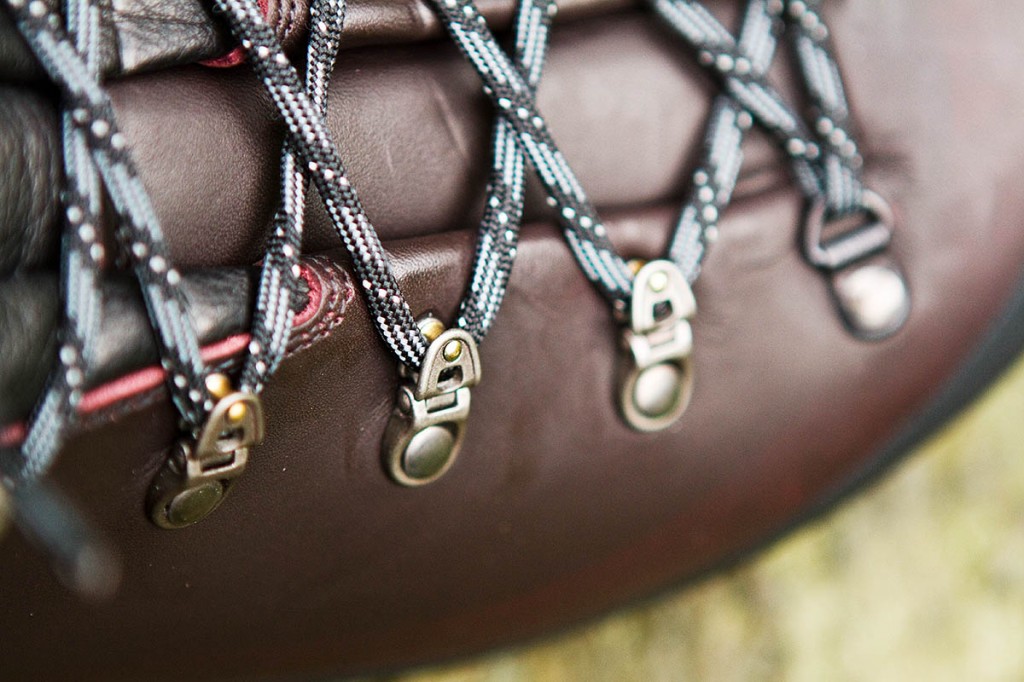
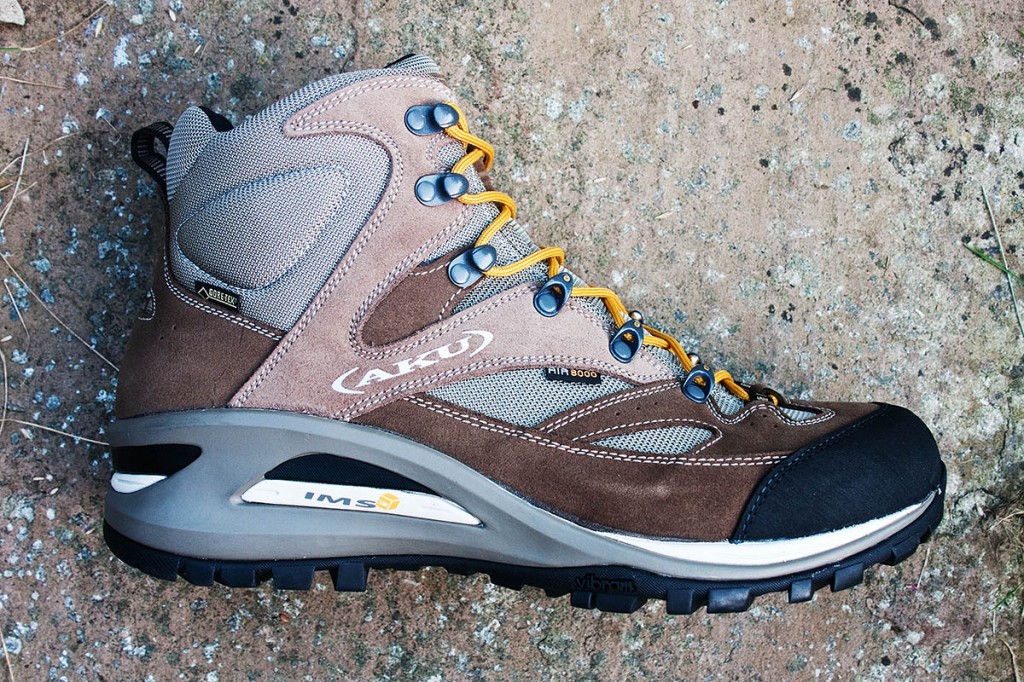

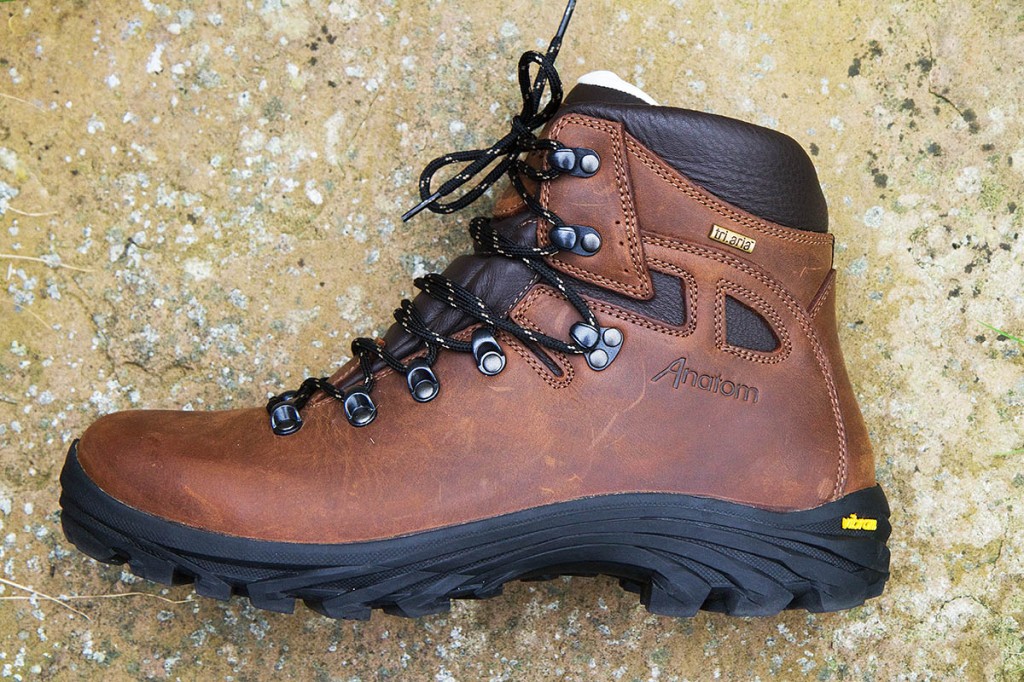

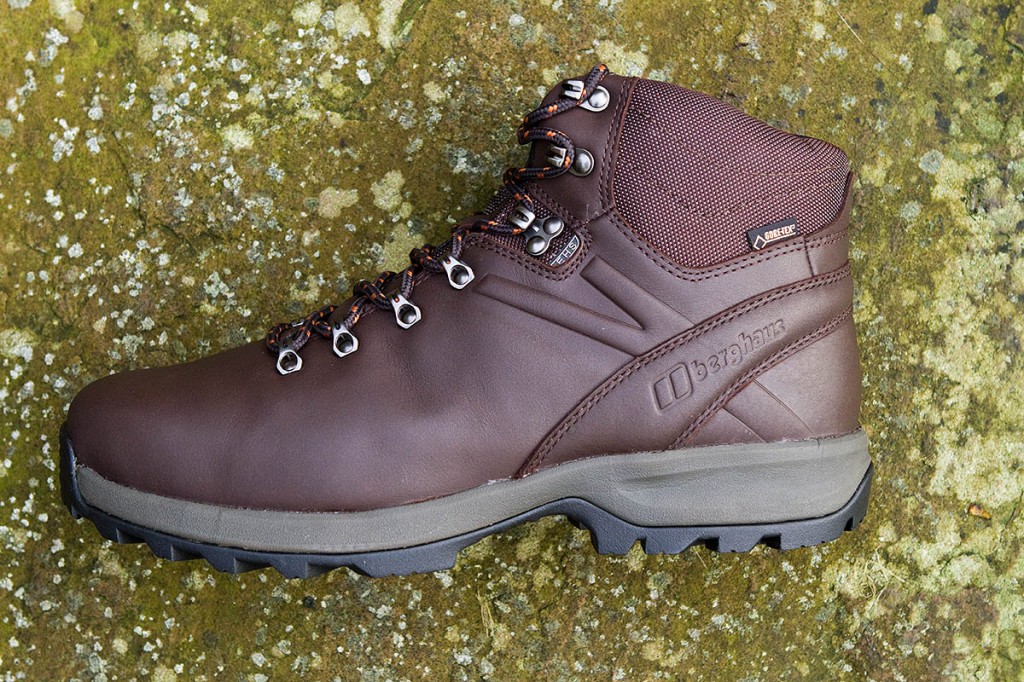
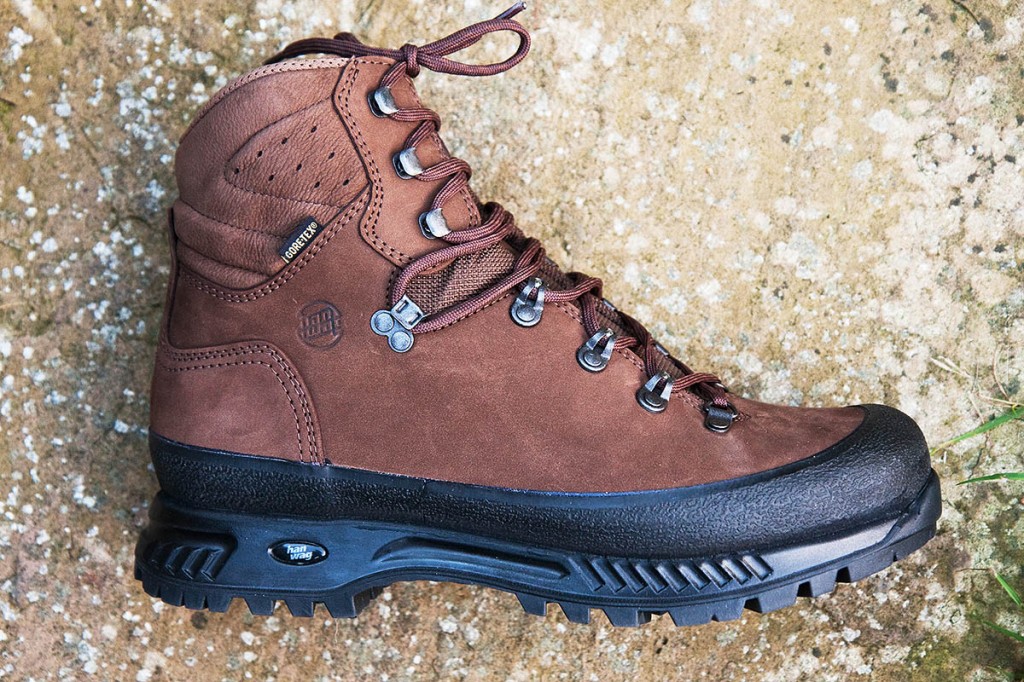

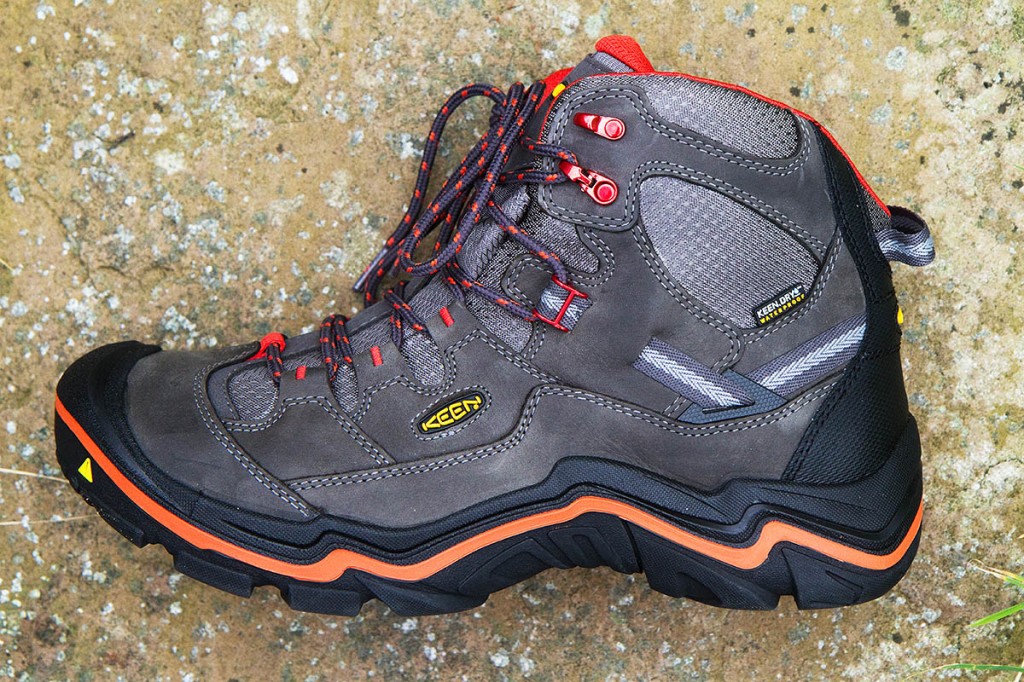
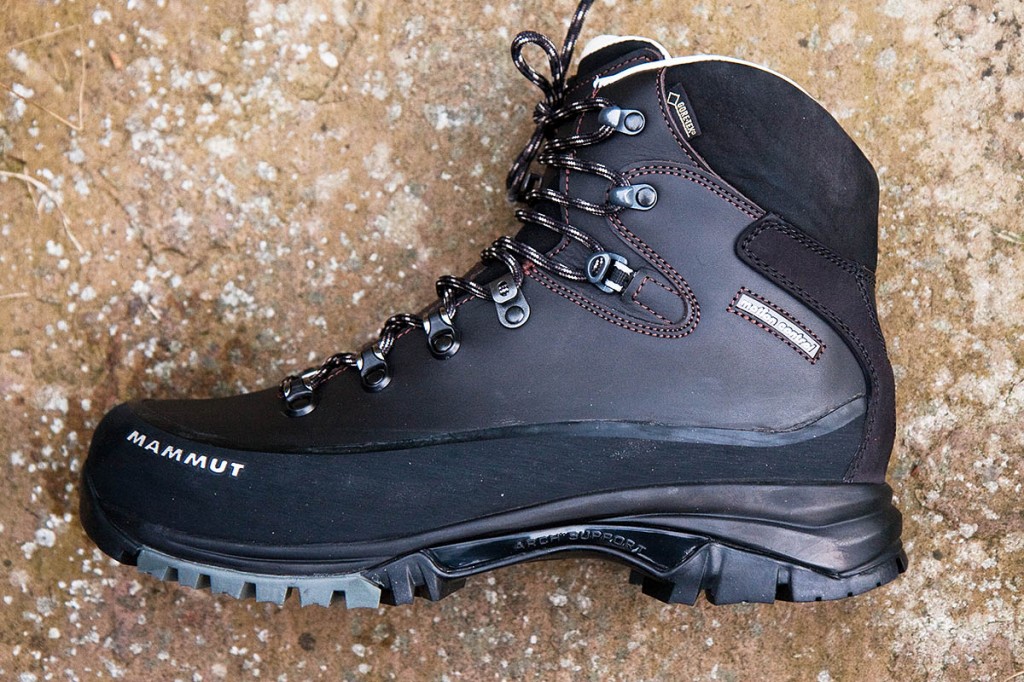
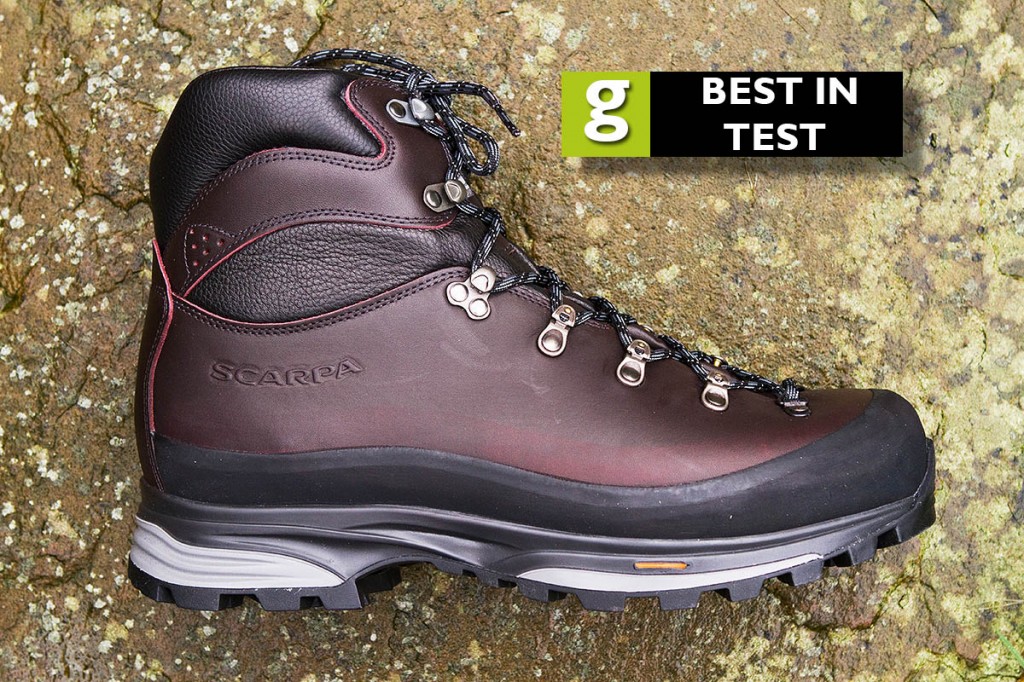

John
02 December 2014Boots are so expensive these days. Seems every time there is a review the manufacturers/retailers add another £25 on? Tip - buy them abroad if you can.
Mick
02 December 2014I have a pair of the Raichle or Mammut GTX and I swaer by them as this is my second pair. Haven't had much use in snow yet but have crampons at the ready for this winter including winter skills training.
A really good boot and can be bought for less than advertised in the details above if you have a look around.
Comftable from the box and really hard wearing, fantastic for scrambling also having just done Moel Saboid in them and performed really well.
TheEdgeOL17
03 December 2014Love my Mammut GTXs I bought them last November ready for a full month (Jan) of fun in the Glyders. Whilst there wasnt much snow they coped well with what there was in Bannana Gulley (crampons fitted) and on the tops. They also performed brilliantly in the wet (it rained almost everyday) and were all day comfortable whether walking or scrambling where they really came into their own.
I have a friend who owns a pair and has used his for via ferrata and he too is very happy with them some of the articles in a certain magazine have questioned the durability due to the stitching on the upper but for me theres been no problems so far.
adam
05 January 2015I think the Alt-Berg Mallerstang is made in Italy. It has all the hallmarks of an Italian boot. The company makes military and police designs in the UK.
Brett
19 September 2015Regarding the Hanwag Nazcat, the pushing of the upper into the foot, did that sensation go away, or did it turned into discomfort during a long track?
I bought recently a pair, and apart from this problem, they are great. Its not an uncomfortable feeling, I wore them for 2 hrs outdoor, walked up and down a steep slope, I feel it more on the right foot than the left. I tried lacing the lower part more loosely, but it didnt help, so a bit of advice wouldnt hurt.
What exactly do you mean by" but it did become marked on a long route"(my english isnt the brightest)?
I'll try and get a pair of SuperFeet or Currex insoles, sadly they didnt have my size at the store, see if that improves the comfort.
Bob
19 September 2015The comment about the long route was that the uncomfortable feeling became more noticable on a longer route because the problem persisted over a few hours.
I have a fairly low volume foot, which I think is partly the reason the boot flexes into my upper forefoot quite a bit.
A volume adjuster to raise the foot in the boot might help this. It doesn't necessarily have to be an expensive insole. The Superfeet insoles are meant more for stabilising the foot, particularly the back section, in the boot for better walking gait and comfort.
The boots are currently on extended test with another tester who finds them more comfortable than I did.
Bob Smith
Brett
20 September 2015Thank you for the quick response, I'll try a volume adjuster (a thicker insole, I guess) and see how it works. Actually I tried a Superfeet insole, they only had one for the left foot, a demo, and it was better then my Meindl vacuum insole.
Andy
28 January 201715 years ago I was issued a pair of Hanwag boots for missions in the Hindu Kush mountains of Afghanistan. The boots were the equivalent of today's Yukon GTX. They were the best piece if kit I had, were extremely comfortable and the roomy toe box and firm heel served me well in some of the worst hiking terrain I'd ever experienced winter through summer. After looking at a lot of boots for something that would serve me well on far more civilized winter treks, I again bought Hanwag. This time I bought the Nazcat GTX and for the money I spent, I'm very happy with the result. Not a great boot for extremely technical terrain, but a wonderfully forgiving boot with lots of room for your feet to expand and a lot of support in the heel and ankle. In Czech Republic, I got them for 5100 CZK, which is a bargain for a Yank.
Daifab
21 January 2023I have bought several pairs of Scarpa sl over the last 20 years.
Always seem to have problems with the rand coming away from the leather. So next time I will probably try the Alt Berg Mallerstang.